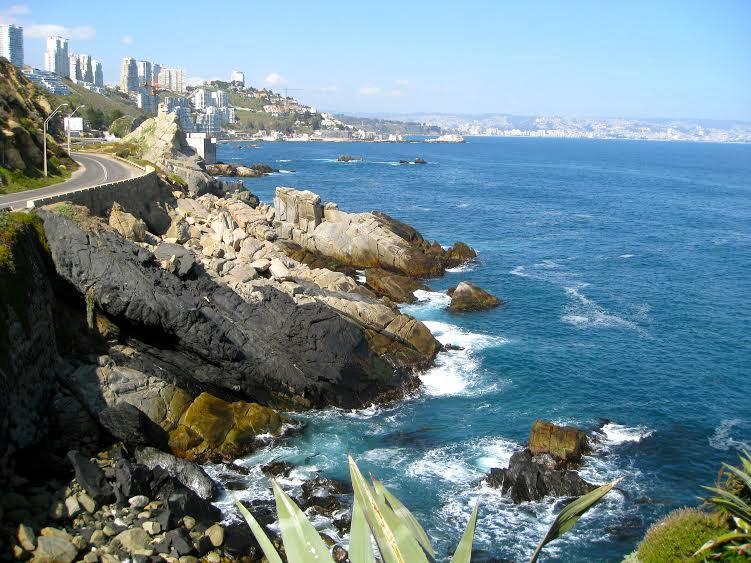
ANGIE WACEK FOR THE HOYA
I wish I didn’t have to leave. In fact, if I could stay another semester and still graduate on time, I would. I have had the most amazing experience in Chile. It was so much more than I ever expected or asked to have.
From its border with Peru, Chile snakes down the South American coast nearly 3,000 miles, almost reaching Antarctica, yet it only averages a width of about 110 miles. As a result, this is a wonderful place to travel because so much geographic diversity can be encountered without ever leaving the country. I went skiing in the Andes Mountains, visited the port town of ValparaÃso, went up north to the Atacama Desert – the driest desert in the world – travelled down south to the lake to pasture-filled Panguipulli, took an excursion to the wine regions of Mendoza, went to Argentina on the other side of the Andes, and am planning a trip in the next few weeks to Patagonia down at the bottom of the world (both the Chilean and Argentinean sides). All of these places were fascinating and completely different, but San Pedro de Atacama was my favorite because it was so uniquely beautiful and encompassed many different landscapes. In Atacama, we gazed at stars brighter and more numerous than I had ever seen before, sandboarded in Valle de la Muerte, watched the sunset in Valle de la Luna, saw the Geysers del Tatio, floated in the salty Laguna Cejar and biked through the desert to ancient ruins.
In addition to spending numerous weekends traveling, I wanted to feel like I belonged in the Chilean culture rather than just feel like a tourist. Living in Santiago with a family and attending la Pontificia Universidad Católica de Chile (or La Católica for short), I started to become acclimatized to the culture and began to spot some of the differences between American and Chilean ways of life. The first thing that struck me was that everyone here is much shorter. Platform and high-heeled shoes tend to be popular. I have always been “short” in the US, but here I am easily at least average. You would think that this would help me blend in, but it turns out that being blonde is like belonging to a different species. Chile has a fairly homogeneous population; that is, generally dark-haired. I have never received so many stares in my life or been identified immediately as foreign because I was rubia or rucia (blonde). Once I was even asked for an autograph just because of the color of my hair.
Another interesting aspect of Chilean culture is that nearly all children live with their parents until they get married, while in the United States most people leave the nest to go to college around 18 years old. I noticed a resulting difference in independence and maturity in the young adults. For me, it took some adjusting to get used to living with a family again.
Chileans are also very comfortable with making out in public spaces with their significant other, especially on the bus or metro at rush hour or in parks. Relationships of all types are extremely important to Chileans.
In the beginning, making Chilean friends was a bit of a challenge, not for lack of trying, but rather because I could understand approximately five-percent of what people said to me. Although I speak Spanish, Chilean Spanish is almost an entirely different language. Some Mexican friends studying with me said that it was difficult for them to communicate at first as well, despite already being fluent in Spanish. Chileans speak very quickly and typically cut out the “s” and “d” in their words. They add in a wide variety of slang from cachái (you get it?) to al tiro (right away) to pololo (boyfriend) to palta (avocado). Despite the unexpected language barrier, I managed to make Chilean friends, improve my Spanish and feel like I really belonged in the community. I’ve been to friend’s houses and met their families and friends. I was not just a tourist observing from afar and taking pictures, but a member of this community developing real relationships.
As a study abroad experience, I couldn’t have asked for much more. Not only was I able to discover the beauty of this country through tourist-style travel, but I was also able to make Santiago feel like home. Perhaps if I had only loved Chile and Santiago for the tourist activities and the opportunity to explore another culture it wouldn’t be so hard to leave, but I love them for the people I’ve met and the relationships I’ve made. I wouldn’t trade any moment I’ve spent here or any of the memories I’ve made. This was one of the most incredible experiences of my life and I wish it didn’t have to end.







